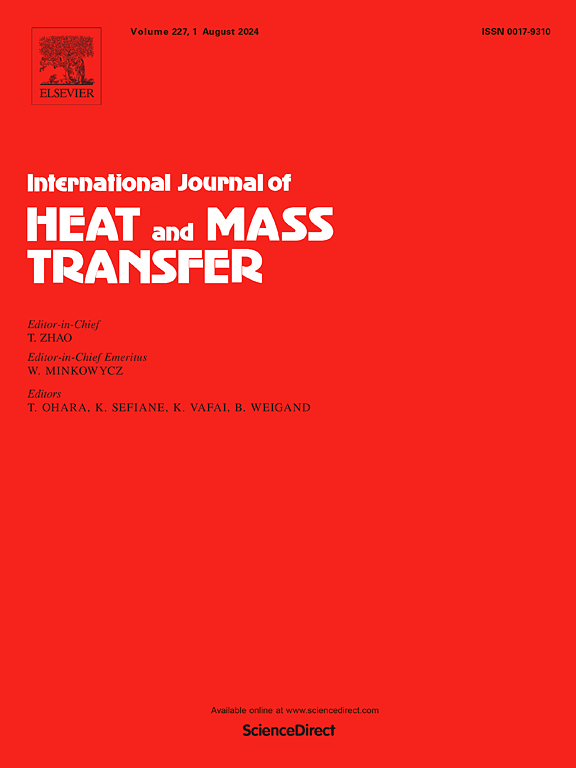Exposed-area dependent forced convective heat transfer in periodic lattice structures
IF 5
2区 工程技术
Q1 ENGINEERING, MECHANICAL
International Journal of Heat and Mass Transfer
Pub Date : 2025-01-11
DOI:10.1016/j.ijheatmasstransfer.2025.126683
引用次数: 0
Abstract
This study presents numerical investigations of heat transfer and fluid flow in metal foams made of distinctive topologies. Two bio-inspired structures referred to as sponge and body-centered sponge (BCS), which exhibit identical thermophysical properties along three orthogonal axes, are proposed. Initially, the pore-scale computational model is validated, showing a deviation of less than 3 % when compared to the existing literature. Despite the intricate conductive pathways of the BCS structure, it is found to be a highly promising porous material as a heat exchanger, exhibiting the highest Nusselt number (twice as much as in cubic structures in water flow), friction factor (4.7 times as that in cubic structures in water flow), and performance evaluation criterion (PEC) (1.2 times as that in cubic structures in water flow). In addition, it is concluded that the large exposed area of fluid-foam walls and the high tortuosity of the BCS structure significantly enhance the Nusselt number. This complexity increases the frequency of flow deflection and stagnation, contributing to improved heat transfer performance. Finally, empirical equations for the Nusselt number and friction factor as a function of the unified exposed area parameter, Reynolds number, and Prandtl number have been developed with acceptable precision, accompanying with the R-squared value higher than 0.97.
求助全文
约1分钟内获得全文
求助全文
来源期刊
CiteScore
10.30
自引率
13.50%
发文量
1319
审稿时长
41 days
期刊介绍:
International Journal of Heat and Mass Transfer is the vehicle for the exchange of basic ideas in heat and mass transfer between research workers and engineers throughout the world. It focuses on both analytical and experimental research, with an emphasis on contributions which increase the basic understanding of transfer processes and their application to engineering problems.
Topics include:
-New methods of measuring and/or correlating transport-property data
-Energy engineering
-Environmental applications of heat and/or mass transfer

 求助内容:
求助内容: 应助结果提醒方式:
应助结果提醒方式:


